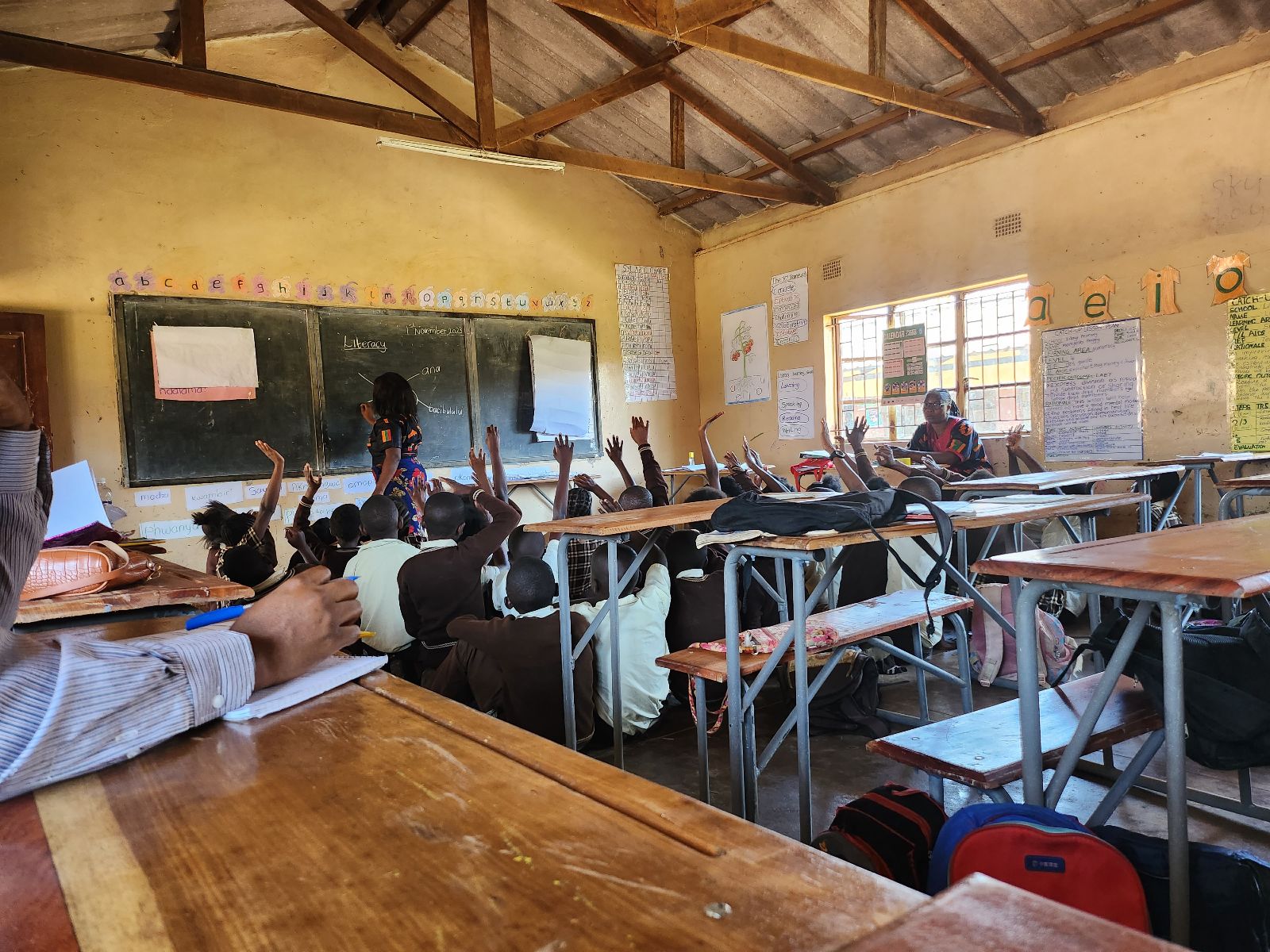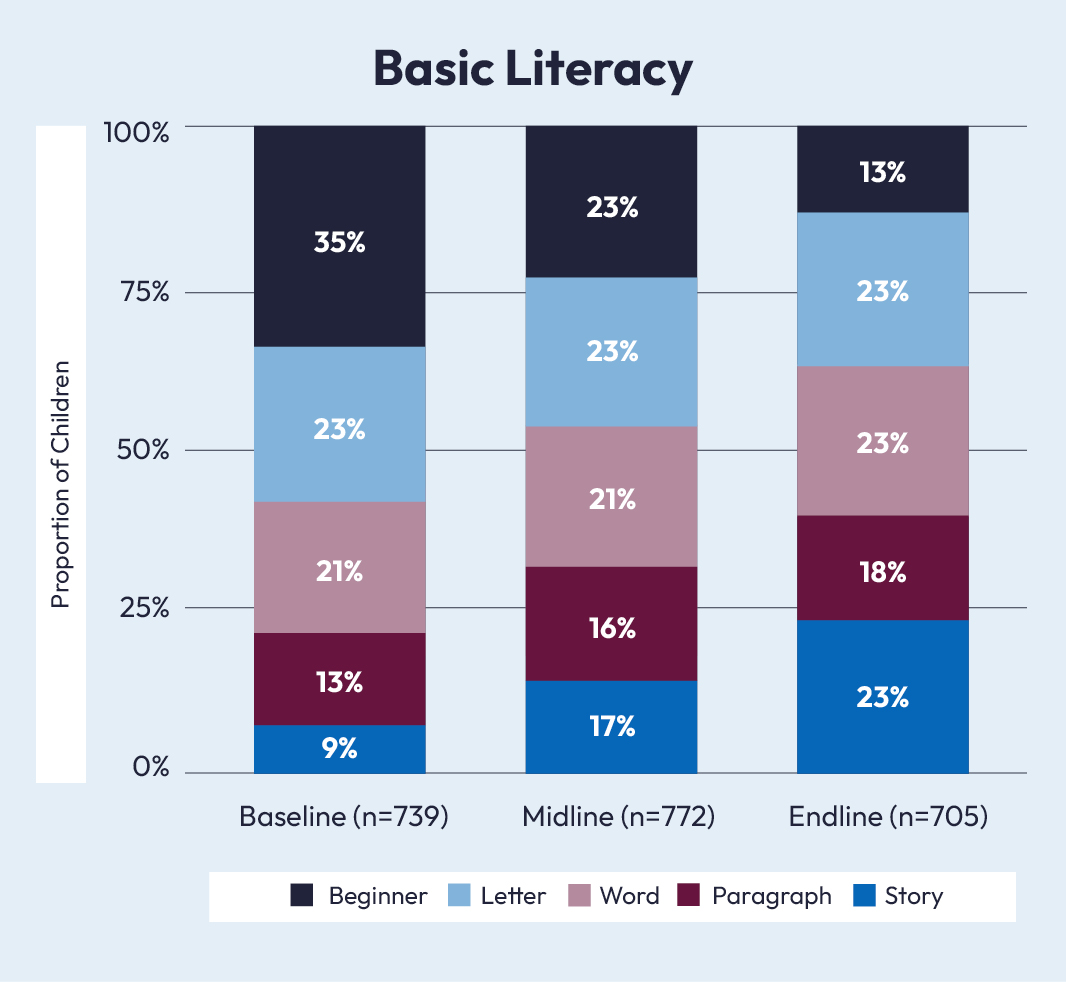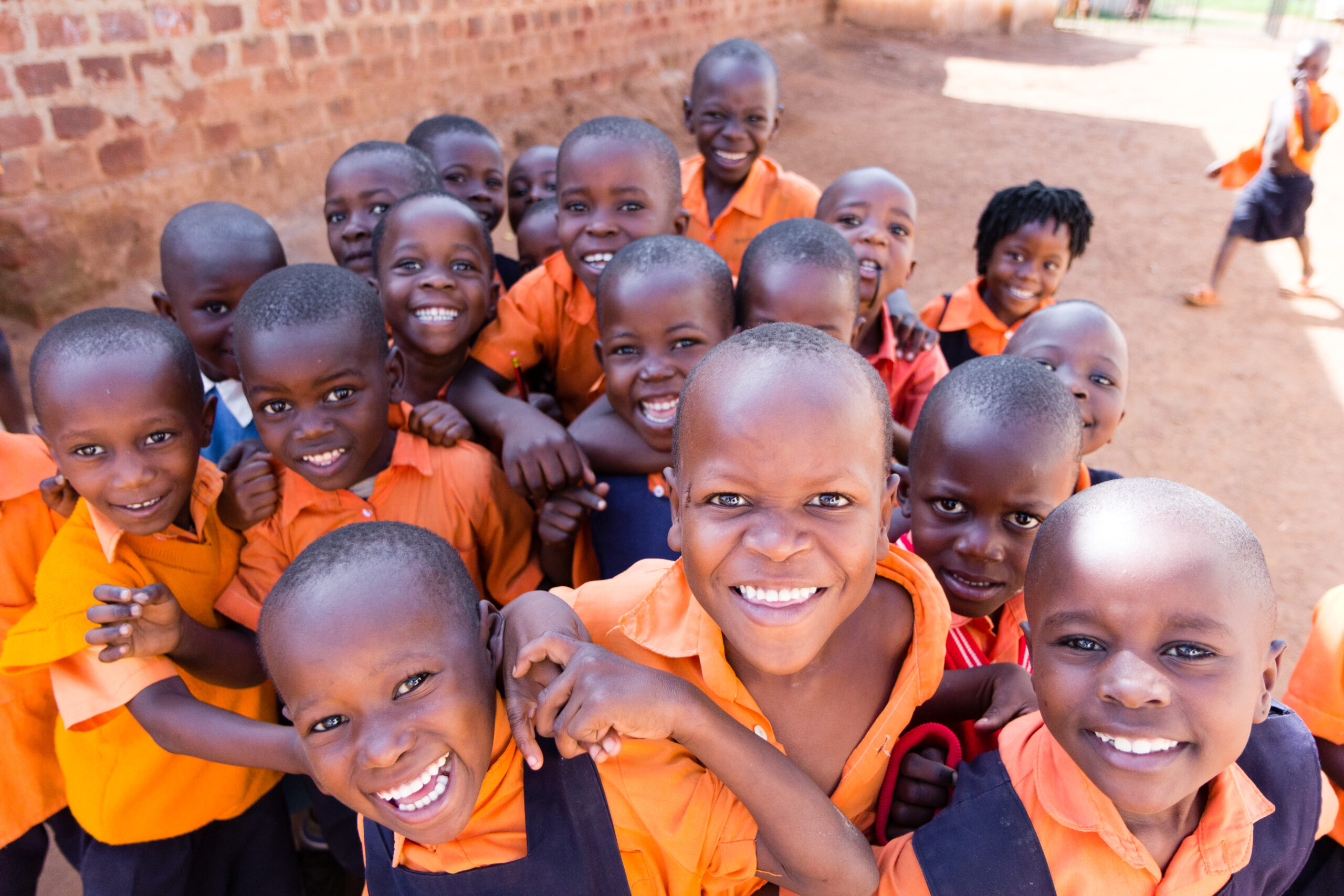We are excited to announce that Brink is now part of Africa Practice. Learn more
Improving foundational learning in Zambia

Africa is experiencing a learning crisis, with the vast majority of children completing primary education without developing reading proficiency. Across sub-Saharan Africa as a whole, the World Bank estimates 86.3% of children suffer from learning poverty, while in Zambia, this stands at a staggering 98.5%.
Such a poor learning environment necessitates a focus on Foundational Literacy and Numeracy (FLN) – the building blocks of all learning. These are crucial for everyday life from reading instructions to managing finances, and are essential for children to ensure they fulfil their potential.
Closing the learning gap
The Global Education Evidence Advisory Panel (GEEAP) recommends the Teaching at the Right Level (TaRL) methodology and structured pedagogy as highly cost-effective interventions supported by evidence. GEAPP
TaRL – proverbially known as “catch-up” in countries such as Zambia – is a methodology where children are grouped by their current learning level, rather than by their current grade. This method was developed as a result of children who had already passed grades 3, 4 and 5 but lacked FLN skills. The TaRL methodology focuses on supporting children with foundational reading, understanding, self-expression and maths abilities. TaRL has been adopted by 12 African countries, reaching over 4 million children.
Structured pedagogy is a scientific, evidence-based, learner-centred approach to teaching that provides teachers with defined objectives, reliable methods, structured materials, and practical training. This approach gives teachers clear guidance on what and how to teach, empowering them to guide students step-by-step, especially in foundational skills such as reading, writing, and basic maths. Studies show that this structured approach leads to significant improvements in learning outcomes.
Together, TaRL and structured pedagogy create a structured yet supportive learning environment where children are provided with strong reading, writing, and maths skills, paving the way for a brighter future.
Catch-up in action in Zambia
The implementation of TaRL – or “catch up” – was evident during my visit to Lilayi Primary School, a government school in Lusaka, Zambia, where I witnessed eager children and dedicated teachers.
At literacy classes, teachers use a variety of methods to engage students, including group work, singing, and cheering. Teachers also engage closely with the learning needs of the children, for instance, sitting on the ground with them as they tell a story, thereby holding their attention, just as their mother or father might have done at story-time at home.
At numeracy lessons, students learn mathematics through the use of an expansion chart and play money. Teachers adopt a variety of hands-on activities, including a monopoly-style game, to help students learn basic mathematical concepts. Teachers also seek to use real-world examples to help students understand the materials, and to build their confidence and self-belief.
Mother tongue education
Crucially, Zambia’s catch-up programme has been designed to respond to localised dynamics, with teachers using “familiar” languages to educate children. Although 73 different languages and dialects are spoken in Zambia, the only official language is English. Such linguistic diversity has meant that monolinguistic education has failed to gain traction in the country. Fortunately, seven indigenous languages – Bemba, Nyanja, Tonga, Lozi, Lunda, Kaonde and Luvale – are spoken by some 90% of the population, and act as regional languages of instruction.
Zambia has experimented with changes to the language of instruction over the course of its history. In 2013, the Ministry of Education, Science and Vocational Training introduced teaching in familiar languages for grades 1-4. The ministry has subsequently worked with international partners, such as VVOB Zambia, J-PAL, the British Council’s ZESSTA programme, and UNICEF Zambia, to adapt the TaRL methodology specifically for grades 3, 4 and 5, thereby overlapping with local language learning.


Passing the test
The results have been powerful. Lilayi Primary School has been implementing the catch-up methodology for two years, with 705 children enrolled in the programme, supported by 19 staff. Catch-up calls for schools to conduct baseline, midline and endline assessments to track children’s progress, facilitating data analysis. As captured on the chart below, literacy and numeracy improved significantly over the course of 2023. In terms of reading and writing competence, 22% of children were able to read a paragraph or a story at the beginning of the year, but this reached 41% by the end of the year – a 19 percentage point improvement. Similarly, in basic mathematics, 33% of learners were able to do subtraction and addition at the beginning of the school year, but this improved to 58% – a 25 percentage point increase.
The catch-up programme has shown results at schools across Zambia, with TaRL being implemented in eight of the country’s 10 provinces. Historic data reveals a major impact in Eastern and Southern provinces. Between January and July 2019, the number of children who could read at least a simple paragraph increased from 35% to 56%; while the number of children capable of subtraction increased from 27% to 51%.
With the African Union having declared 2024 as the year of education, other states should consider the potential of catch up programmes to provide access to quality foundational literacy and numeracy skills needed to succeed in life. Only with quality education will children be able to reach their full potential.
Proud to be BCorp. We are part of the global movement for an inclusive, equitable, and regenerative economic system. Learn more


